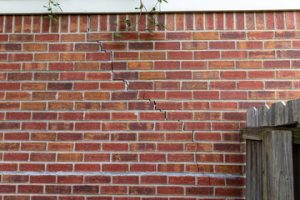When foundation cracks appear, a homeowner may attempt to repair them with epoxy or fillers. However, these quick fixes conceal cracks and do not address the underlying cause of the problem.

To fix the problem, contractors dig holes around the house and install vertical supports to lift it back to its original elevation. This can close cracks, re-align doors and trim, and make the home more functional. Contact Foundation Repair Greensboro NC for professional help.
When considering foundation repair, homeowners should be aware of several key factors that directly influence the costs associated with this type of work. For example, the extent of the problem will determine how extensive a repair project will be and what types of repairs are necessary. This can impact the overall cost, including any potential labor and materials costs. In addition, the ease with which contractors can access a home’s foundation can also impact cost. Some types of repairs require special equipment or permits to complete, which may add to overall costs. Finally, warranty or guarantee details can also play a role in determining the final price for any work performed.
Taking some proactive steps to prepare for the repair process can help reduce these costs. For example, clearing any debris or obstructions from the area surrounding a home’s foundation can ensure that workers and equipment have easy access. In addition, addressing drainage issues can help prevent water from seeping into a foundation and causing further damage.
Additionally, homeowners should be aware of any potential savings that might be available for addressing a foundation issue. For instance, many insurance providers offer coverage for foundation-related problems that are a result of poor construction, and it is worth checking to see if any options are available.
A stable and sound foundation is a major asset for any homeowner, and it can also improve the overall appearance of a property. In addition, properly addressing any problems can help minimize energy expenses by reducing gaps that make it difficult to heat or cool the home.
If you’re not sure how to address a foundation problem, it’s wise to consult with an experienced contractor to discuss your options and budget. An expert can provide a detailed estimate for the work and help you understand any potential costs or savings involved.
Repair Options
When foundation repair is needed, a variety of solutions are available. The best solution is one that addresses the underlying cause of the problem. It’s important to consult with a foundation specialist for tailored repairs that are designed to last.
There are several signs that you may need foundation repair, including hairline cracks in wall surfaces and sagging floors. These are indicative of structural movement that can lead to other problems if left unattended. Window and door frames that jam when they are opened or closed can also indicate that the foundation is shifting.
The goal of foundation repair is to raise the home back to its original elevation, which will close cracks, align doors and windows, and return plumbing and electrical systems to their proper positions. The process involves jacking up the foundation and installing supports underneath the home that will support it. Various methods are used to accomplish this, including steel piers, concrete piers, and helical piers.
Helical piers have a spiral design that helps them dig into the ground. These are a good option when access is limited or when the soil is too dense for other methods of repair. Steel piers are a more robust choice when severe foundation settlement is involved. They are drilled below the foundation and connected to hydraulic jacks that can lift the building.
Concrete piers are a more traditional method of foundation repair. They are drilled into the ground below the foundation and filled with liquid concrete. After the concrete has cured, the construction crew can lift the foundation with hydraulic jacks.
Another common method of foundation repair is polyurethane injection. This process injects a highly-adhesive epoxy resin into cracks and voids to fill them and seal them from water infiltration. Polyurethane injection is a minimally-invasive repair solution that works well for slabs that have minor settlement or voiding issues.
When foundation damage is addressed in a timely manner, homeowners can expect their properties to maintain their value and function as they were originally intended. Ongoing maintenance and monitoring can further prevent future foundation problems from developing.
Inspections
Structural engineers are experts at assessing and addressing foundation problems. They have a keen eye for detail and follow a set process to determine the root cause of the problem and find the best solution. These experts begin by conducting a thorough inspection of the property. They look for signs of a shifting foundation, including cracks and fissures that occur in the walls and floors. The inspection also includes examining the crawl space under the structure, looking for wet or musty conditions.
They may also perform a hydrostatic test. This involves placing a pressure tank on the ground near the foundation and filling it with water. The pressure on the tank measures the water-pressure level and if the pressure is high, it indicates that there is a high moisture content in the soil around the foundation. A high moisture content can lead to soil expansion and settling, which causes the foundation to shift. The structural engineer can then recommend a solution for the problem, such as installing a drainage system or sloping the landscape to direct water away from the foundation.
Once the inspection is complete, a detailed plan for repairs is drafted. This should include a timeline and the methods that will be used. This plan should also take into account variables such as weather and terrain conditions. A good contractor will work with homeowners to find a schedule that fits their needs and budget.
Homeowners should choose a company that offers transparency in their pricing. They should include line items for material costs, fuel charges, and additional services to give the homeowner an idea of how the total cost is arrived at. It is also important for the contractor to clearly explain any changes to the contract.
Regular inspections of the foundation can help reduce the risk of costly repairs down the road. This can be especially important if the property is located in an area prone to natural disasters, or if it’s older and subject to a lot of settling over time. Investing in a sound foundation can also boost resale value and provide peace of mind for homeowners.
Work Done
Foundation repair contractors have a number of methods at their disposal to correct issues like cracks, settling and shifting. The work they perform is essential to the structural integrity of your home, and should never be ignored. If left untreated, these problems can degrade the value of your home and leave it vulnerable to further damage and even collapse.
Whether your foundation is damaged from expansive soil, seismic events or spalling, a trusted and experienced local contractor can address the problem to prevent more extensive damage and save you money. By taking the time to do some research, you can find a contractor that is reputable and qualified for your specific needs.
To stabilize your foundation, contractors dig underneath your house and insert concrete pilings, which are large cylinders that look like columns on a plantation-style home’s front porch. They may also use steel pressed pilings, which are pre-formed concrete pieces that are pushed into the ground using hydraulic pressure. Once the pilings are installed, they are then shimmed to raise sunken portions of your home back to their original height. As your home rebounds from these repairs, you may notice small cracks, which are normal and part of the process.
In addition to utilizing a reputable local foundation contractor, homeowners should take several important precautions to prepare for the work. This includes clearing any debris or obstructions around the foundation, and ensuring that all areas are accessible for contractors to access. Additionally, homeowners should maintain proper grading and drainage solutions to ensure that water does not pool near the foundation. This can help mitigate the impact of water infiltration, which accelerates deterioration and makes more extensive repairs necessary. Finally, homeowners should regularly check and clean gutters and downspouts to make sure they are functioning properly. This will help direct rainwater away from the foundation, reducing the risk of water infiltration and preventing further damage. If you notice any signs of shifting or cracking in your walls or doors, it’s important to contact a professional foundation repair contractor right away. The sooner the issue is addressed, the less expensive and more invasive it will be to fix.

